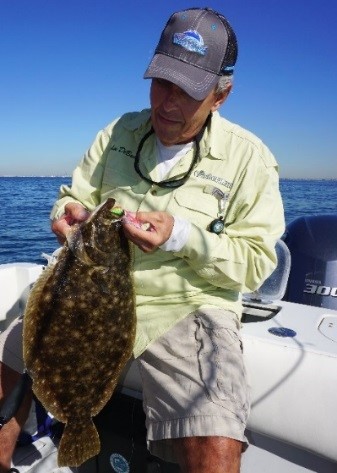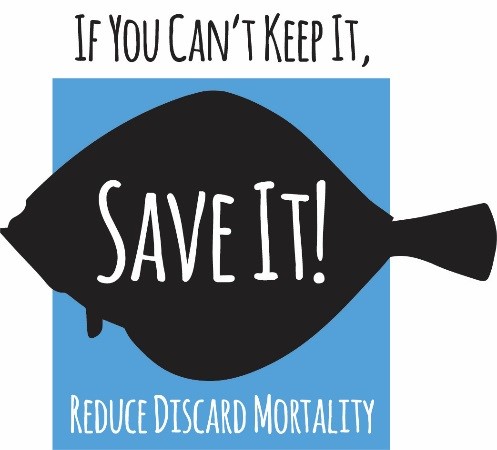|
FOR IMMEDIATE RELEASE |
Contact: Lawrence Hajna (609) 984-1795 |
|
NOAA AFFIRMS NEW JERSEY'S CURRENT-SEASON SUMMER FLOUNDER LENGTH AND BAG LIMITS (17/P73) TRENTON – The National Oceanic and Atmospheric Administration (NOAA) has affirmed New Jersey’s summer-flounder fishing size, bag limits and season, meaning all rules adopted by the state earlier this year will remain in effect through early September, Department of Environmental Protection Commissioner Bob Martin announced today. “We are very pleased that NOAA worked with us to understand our position that sound science and good long-term planning must drive decisions about the management of summer flounder, one of the state’s most important recreational and commercial fish species,” Commissioner Martin said. “New Jersey is fully committed to employing science and public education to conserve a species that is critical to the fishing culture and economy of the state.” “I would like to thank Secretary Ross and Assistant Administrator of NOAA Fisheries Chris Oliver and for working with the State of New Jersey to preserve and manage our fisheries through responsible management processes, while recognizing the economic impacts of this industry to the state,” said DEP Deputy Commissioner David Glass. The decision means that the recreational summer flounder season, that began May 25 and runs through Sept. 5, remains unchanged. The minimum size remains 18 inches for summer flounder for most coastal waters, including the ocean, estuaries and creeks. Anglers in these areas may keep three legally sized fish per day. The size limit for Delaware Bay is 17 inches, with a three-fish per day limit. At Island Beach State Park the size limit for shore fishing is 16 inches, with a daily two-fish limit. Toward the DEP’s goal of ensuring a sustainable summer flounder fishery, the DEP’s Division of Fish and Wildlife launched a campaign to educate the fishing public on how to reduce discard mortality by safely releasing summer flounder that do not meet minimum size requirements. “We are asking all anglers to help protect this important species for future generations,” Commissioner Martin said.
The “If You Can’t Keep It, Save It!” campaign focuses on the proper handling methods and gear to use to reduce unintentional mortalities that can occur when flounder that do not meet minimum length requirements are returned to the water. The campaign builds upon the FishSmart campaign promoted by the National Oceanic and Atmospheric Administration. New Jersey’s effort features distribution of print and electronic brochures to anglers registered through the state’s Saltwater Registry, charter and party boat operations, bait-and-tackle shops and members of fishing organizations, as well as radio public-service announcements and newspaper advertisements. The Division of Fish and Wildlife is also doing outreach through its website, email lists and social media. To make the “If You Can’t Keep It, Save It!” campaign even more successful, the Division of Fish and Wildlife, in coordination with the American Sportfishing Association and Eagle Claw These hooks will be available soon at bait-and-tackle shops. The Save the Flounder Fishery Fund provided valuable support to this effort. A list of participating shops will be made available on the DEP’s website and the Division of Fish and Wildlife Facebook page. The Division of Fish and Wildlife encourages anglers to follow these techniques:
“By following these guidelines, anglers will be giving fish a better chance of survival,” said Division of Fish and Wildlife Director Larry Herrighty. “This campaign reminds all generations of anglers that proper handling and quick return to the water will help ensure an ample supply of keepers for generations to come.” In February, the Atlantic States Marine Fisheries Commission (ASMFC), a regional board comprised of representatives from Maine to Florida, approved a 19-inch size limit for New Jersey. However, Division of Fish and Wildlife data show that few fish in New Jersey reach that size due to the species’ biological needs and distribution patterns. Moreover, the overwhelming majority of fish that would meet that “keeper” size limit would be reproductive females. New Jersey appealed the ASMFC decision to NOAA, expressing concerns that the larger size limit would result in a significant increase in discard mortalities and would make the population less sustainable by forcing anglers to keep reproductive females. For more on flounder regulations, best fishing practices, a list of shops distributing free hooks (when available) and other information, click the logo or visit: http://www.SaveFluke.nj.gov ### |
|
 The decision, approved by U.S. Secretary of Commerce Wilbur Ross, finds New Jersey in compliance for management of summer flounder. It follows weeks of information-sharing between the DEP and NOAA about the expected impacts on New Jersey’s summer flounder fishery imposed by a regional fisheries commission earlier this year.
The decision, approved by U.S. Secretary of Commerce Wilbur Ross, finds New Jersey in compliance for management of summer flounder. It follows weeks of information-sharing between the DEP and NOAA about the expected impacts on New Jersey’s summer flounder fishery imposed by a regional fisheries commission earlier this year.